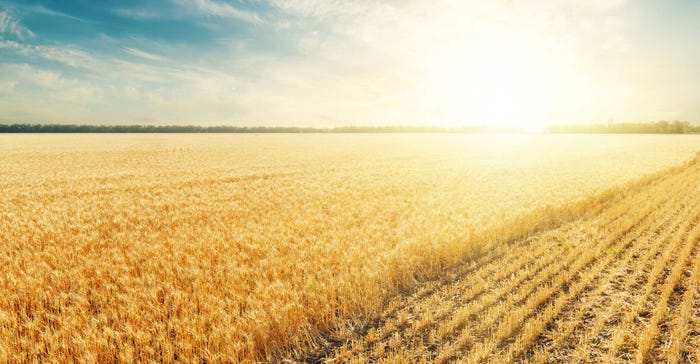
Spring wheat ’s condition declined for the fifth straight week, the latest being just a 3-point dip to 37% good to excellent as sizable slippage in Montana and Washington more than offset some improvement in North Dakota and Idaho.
Winter wheat’s condition dipped a point to 48% good/excellent. The crop was 53% harvested to trail the five-year average by a point.
Corn improved a point to 68% good/excellent in USDA’s weekly progress report with gains noted in Illinois, Indiana, Missouri and Kansas, while Iowa slipped 1 point to 78% and North Dakota’s dropped a point to 55%.
Soybeans slipped 2 points to 64% good/excellent and were down from last year’s 70%. Declines were noted in Iowa, Missouri and North Dakota, while Illinois and Indiana were unchanged.
“The decline in wheat conditions knocked another 19 million bushels off our production estimate, which fell to 1.743 billion bushels,” said Bryce Knorr, Farm Futures senior grain analyst. “Spring wheat yield potential lost 1.2 bushels per acre, declining to 39.8 bpa, with a big drop noted in Montana. Winter wheat yields eased almost .2 bpa to 46.3, with the range 45.9 to 46.8 bpa.”
Montana’s spring wheat was rated 8% good/excellent versus 22% a week ago. Washington’s spring wheat dropped to 43% from last week’s 68%
“Another week of hot, dry weather with limited precipitation occurred for a majority of the state,” Montana said. “High temperatures ranged from the lower 80s to upper 90 degrees and low temperatures ranged from 28 degrees in West Yellowstone to the lower 50s.”
Montana’s soil moisture continued to decline with 80% of the topsoil moisture rated very short to short and 77% of subsoil moisture very short to short. Its spring wheat rated 8% good/excellent, compared with 22% a week ago.
“Corn ratings rose, with gains in a few states, including Illinois and Indiana, offsetting losses elsewhere,” said Knorr. “Our projected corn yield gained almost a half bushel per acre to 170.6, with the two models at 171.8 and 169.4 bpa. Vegetation Health Index models continue to point towards lower ratings.”
The drop in the soybean rating trimmed about a third of a bushel from Farm Futures yield rating to 48.7 bushels per acre with a range of 48.4 to 49.1, said Knorr. The VHI maps point to even lower yield potential of around 47.7.
Iowa had a few tornadoes, hail, and isolated precipitation “but reporters expressed need for more rain across much of the state during the week ending July 2,” the state said.
In other tallies, corn silking reached 10% versus the 13% average and soybean blooming was 18% versus the 17% average. No Iowa corn was silking as of Sunday, compared with the 6% average, while Illinois was 12% versus the 21% average and Nebraska at 8% versus the 9% average.
Nationally, sorghum was 25% headed versus the 24% average. The crop was rated 62% good/excellent, down three points from a week ago.
About the Author(s)
You May Also Like




